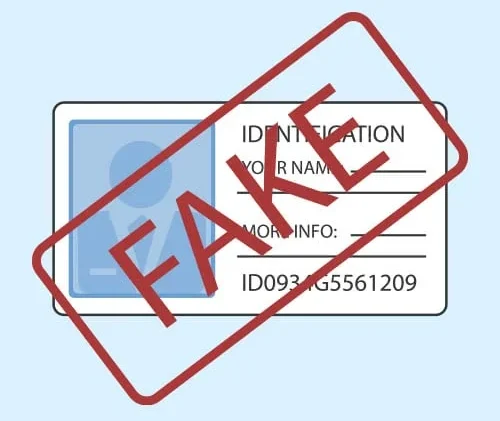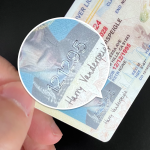### Introduction to Real ID
A Real ID is a type of identification card that meets specific federal standards set by the Real ID Act of 2005. It was created to enhance security and ensure that individuals presenting identification for certain federal – related activities have a more reliable form of ID. Real IDs are recognized as compliant for accessing federal facilities, boarding domestic flights (starting from a certain date), and other situations where a high – level of identity verification is required.
### General Application Process for a Real ID
1. **Gather Required Documents**:
– **Proof of Identity**: This can include a valid U.S. passport, a certified birth certificate (original or a copy issued by the vital records office), or a foreign passport with an approved Form I – 94. The birth certificate should have a raised seal and be an official government – issued document.
– **Social Security Number Verification**: You may need to present your Social Security card. If you don’t have the physical card, some states may accept other forms of proof such as a W – 2 form or a pay stub with your full Social Security number on it.
– **Proof of Residency**: Two forms of proof of your current address are usually required. Acceptable documents can be a utility bill (such as electricity, water, or gas bill), a bank statement, a mortgage or lease agreement, or a government – issued letter with your name and address.
2. **Visit the Appropriate DMV Office**: Find your local Department of Motor Vehicles (DMV) or the equivalent agency in your state that handles Real ID applications. It’s advisable to check their website or call in advance to find out about any specific requirements, appointment availability, and office hours.
3. **Complete the Application Form**: Fill out the Real ID application form accurately. Provide all the necessary personal information, including your full name, date of birth, and contact details.
4. **Provide Biometric Information**: In most cases, you will need to have your photograph taken and your fingerprints scanned as part of the identity verification process.
5. **Pay the Application Fee**: There is usually a fee associated with applying for a Real ID. The amount can vary by state, but it typically ranges from $20 – $50. Acceptable payment methods may include cash, credit/debit cards, or checks.
### Applying for a Real ID with a Criminal Record
1. **Understanding the Impact of a Criminal Record**: Having a criminal record does not necessarily disqualify you from obtaining a Real ID. However, certain types of criminal convictions may have an impact on the application process in some states. For example, if you have a conviction related to identity theft or fraud, the DMV may be more cautious during the verification process.
2. **Be Honest and Transparent**: When filling out the Real ID application, be honest about your criminal record. There may be a section on the application where you are asked about any criminal convictions. Failing to disclose this information when required can lead to your application being rejected or even further legal consequences.
3. **Check State – Specific Requirements**: Each state has its own set of rules regarding Real ID applications for individuals with criminal records. Some states may require additional documentation or a background check as part of the process. For example, if you have a felony conviction, a state may request that you provide proof of your identity from additional sources or have a more in – depth review of your application.
4. **Legal Representation (if necessary)**: In cases where your criminal record is complex or there are concerns that it may affect your Real ID application, it may be beneficial to consult with a legal professional. An attorney can help you understand your rights and obligations during the application process and can represent you if there are any disputes or challenges.
5. **Follow – up on the Application**: After submitting your Real ID application, it’s important to follow up with the DMV to ensure that the process is progressing smoothly. If there are any issues or additional information needed, the DMV will usually contact you. However, you can also call or visit the office to inquire about the status of your application.
### Common Problems and Solutions When Applying for a Real ID with a Criminal Record
#### 1. Incomplete or Incorrect Documentation
**Problem**: You may have lost or damaged some of the required documents, such as your birth certificate or Social Security card. Or, the documents you present may have incorrect information, like a misspelled name.
**Solution**: If you’ve lost your birth certificate, contact the vital records office in the state where you were born to request a new copy. For a lost Social Security card, you can apply for a replacement online through the Social Security Administration’s website or visit a local Social Security office. If there is incorrect information on a document, work with the issuing agency to correct it. For example, if your name is misspelled on your birth certificate, you may need to provide additional proof of your correct name, such as a marriage certificate or a court – ordered name change document.
#### 2. Difficulty in Proving Residency
**Problem**: You may not have two acceptable forms of proof of residency. For example, if you are living with friends or family and don’t have a lease in your name, or if your utility bills are in someone else’s name.
**Solution**: If you don’t have a lease in your name, you can ask the property owner to provide a notarized letter stating that you live at the address. You can also use other official documents with your name and address, such as a voter registration card or a tax return. If your utility bills are in someone else’s name, you can provide a bill along with a letter from the account holder stating that you are a resident at the address and a copy of their ID.
#### 3. Concerns Related to Criminal Record Disclosure
**Problem**: You may be hesitant to disclose your criminal record on the application due to privacy concerns or fear of negative consequences.
**Solution**: Remember that being honest on the application is crucial. The DMV is mainly focused on verifying your identity and ensuring compliance with Real ID standards. In most cases, having a criminal record does not automatically mean your application will be rejected. If you have concerns about how your criminal record will be treated, you can contact the DMV directly and ask for clarification on their policies. Additionally, as mentioned earlier, consulting with a legal professional can give you more peace of mind and guidance.
#### 4. Delays in the Application Process
**Problem**: Your application may be taking longer than expected, especially if a background check related to your criminal record is required.
**Solution**: Regularly follow up with the DMV to inquire about the status of your application. You can call their customer service line or visit the office in person. If the delay is due to additional documentation being required, provide the requested information as soon as possible. If the delay seems unreasonable or there is no clear explanation, you may consider filing a complaint with the appropriate state agency that oversees the DMV.
#### 5. Inconsistent State – Specific Rules
**Problem**: The rules for applying for a Real ID with a criminal record vary from state to state, and it can be confusing to understand what is required in your particular state.
**Solution**: Thoroughly research your state’s DMV website. They usually have detailed information about Real ID applications, including any specific requirements for individuals with criminal records. You can also call the DMV’s customer service line and ask for specific guidance. If you are moving from one state to another and need to apply for a Real ID in the new state, make sure to familiarize yourself with the new state’s rules well in advance.
In conclusion, while having a criminal record may add some complexity to the Real ID application process, it is still possible to obtain a Real ID by following the proper procedures, being honest, and providing the required documentation. By being aware of the common problems and their solutions, you can navigate the process more smoothly.
Fake ID Pricing
unit price: $109
| Order Quantity | Price Per Card |
|---|---|
| 2-3 | $89 |
| 4-9 | $69 |
| 10+ | $66 |


